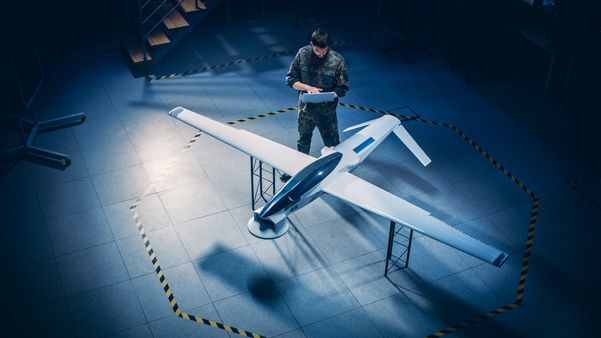Textron (TXT +2.31%) announced mixed second-quarter 2019 results on Wednesday morning, highlighting significant operational improvements that helped offset the impact of broad-based revenue declines from each of its business segments.
But while the aerospace and defense conglomerate followed by modestly raising its full-year earnings guidance, shares are down nearly 7% in today's early trading as investors absorb the news. Let's have a deeper look at what's driving Textron as it enters the second half.

IMAGE SOURCE: TEXTRON.
Textron's results: The raw numbers
| Metric | Q2 2019 | Q2 2018 | Growth (Decline) |
|---|---|---|---|
|
Revenue |
$3.211 billion |
$3.726 billion |
(13.8%) |
|
GAAP net income |
$217 million |
$224 million |
(3.1%) |
|
GAAP earnings per share |
$0.93 |
$0.87 |
6.9% |
Data source: Textron quarterly filings. GAAP = generally accepted accounting principles.
What happened with Textron this quarter?
- Textron's earnings per share were once again lifted by stock repurchases, including $159 million in the second quarter.
- Textron doesn't offer specific quarterly revenue or earnings guidance. So while we don't usually lend much credence to Wall Street's models, consensus estimates called for lower earnings of $0.86 per share on higher revenue of $3.44 billion.
- By business segment:
- Textron Aviation revenue fell 12% to $1.123 billion, driven by lower volume and mix across its commercial turboprop and defense lines. Aviation delivered 46 jets this quarter (down from 48 in the same year-ago period) and 34 commercial turboprops (down from 47 a year ago). Segment profit increased slightly to $105 million, and backlog ended the quarter at $1.9 billion.
- Bell revenue declined 7.2% to $771 million, driven by a combination of lower military volume and 53 commercial helicopters delivered (down from 57 a year ago). Segment profit dropped 12% to $103 million, and backlog was $6 billion.
- Textron Systems revenue fell 18.9% to $308 million, driven by lower volume from both unmanned systems and the TRU Simulation + Training business. Segment profit climbed 22.5% to $49 million, driven by operational improvements and a gain related to the formation of Textron's new FlightSafety International training business.
- Industrial revenue declined 17.4% to $1.009 billion, mostly due to last year's strategic divestment of the Tools & Test business. Segment profit fell $4 million to $76 million, as operational improvements from Specialized Vehicles products were more than offset by lower volumes and the impact of the divestment.
- Finance segment revenue decreased by $1 million to $16 million, and segment profit increased $1 million to $6 million.
What management had to say
"Operationally, we continued to have solid margin performance across our businesses with improvements in the quarter at Aviation and Industrial, and we remain on track for growth in the second half of the year," stated Textron Chairman and CEO Scott Donnelly.
Looking forward
Given its bottom-line outperformance this quarter, Textron increased its full-year earnings outlook by $0.10 per share for a new range of $3.65 to $3.85. Textron also reaffirmed its target for cash flow from continuing operations of the manufacturing group (before pension contributions) to be in the range of $700 million to $800 million.
"We remain on target for a strong 2019 as we continue our focus on execution and earnings growth through the balance of the year," Donnelly added.
Similar to last quarter, Textron did not revise its full-year revenue outlook, which was initially provided in January and calls for revenue to be roughly flat on a year-over-year basis at $14 billion. But with shares up nearly 20% year to date leading into this report -- and even though Donnelly predicts a return to growth in the second half -- the market is unsurprisingly balking at Textron's light top-line performance relative to expectations.






